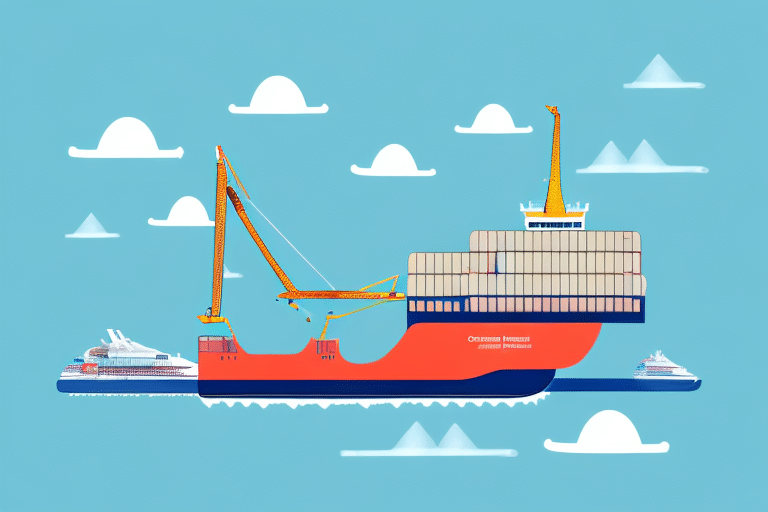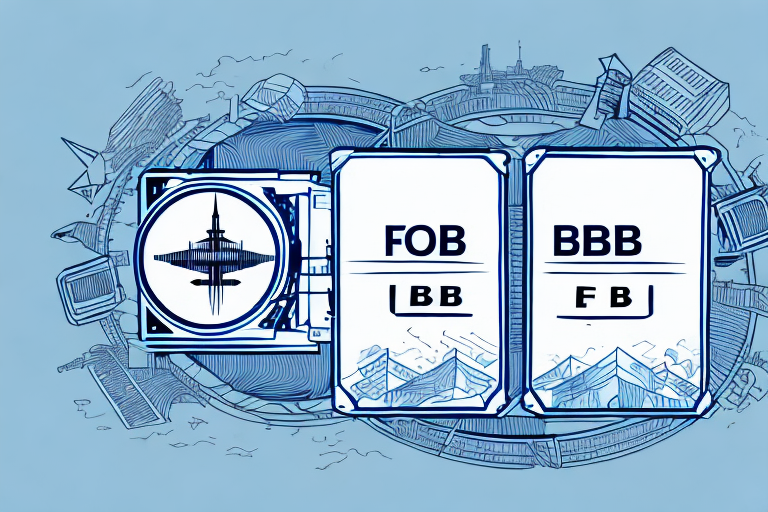FOB Point: Definition and Origin
FOB stands for "Free on Board", a critical shipping term used in international trade to delineate the point at which ownership and responsibility of goods transfer from the seller to the buyer. The FOB point can vary depending on the agreement between the trading parties and typically marks where goods are loaded onto the transport vessel—whether by ship, plane, or truck.
The term "FOB" originated in the 19th century during the era of steamships, signifying that the seller had fulfilled their obligation by delivering the goods to the dock without cost to the buyer. Over time, the definition has expanded to cover various shipping scenarios, adapting to modern logistics and transportation methods.
Understanding the FOB point is essential as it determines who is responsible for the goods during transit. If the FOB point is at the seller's location, the seller retains responsibility until the goods are loaded onto the vessel. Conversely, if the FOB point is at the buyer's location, the buyer takes on responsibility once the goods are loaded.
Clearly defining the FOB point in shipping agreements helps prevent confusion and potential disputes. Additionally, the FOB point can influence shipping costs, as the responsible party may need to arrange additional insurance or other measures to ensure safe delivery.
Understanding FOB Point in Shipping and Logistics
For businesses engaged in international trade, comprehending the FOB point is vital for managing shipping expenses and overseeing logistical operations effectively. The FOB point determines which party bears the transportation costs from the origin to the port or terminal. Once the goods are loaded onto the vessel at the FOB point, ownership transfers to the buyer, who then assumes responsibility for transportation costs to the final destination.
The FOB point also plays a significant role in risk management. It specifies the exact moment when the risk of loss or damage shifts from the seller to the buyer. For instance, if goods are damaged after reaching the FOB point, the buyer is liable for the loss.
It is important to note that the FOB point can differ based on the mode of transportation. For truck shipments, the FOB point might be the seller's warehouse, whereas for maritime transport, it could be the port of departure. Establishing a clear FOB point in contracts is crucial to avoid logistical misunderstandings and ensure smooth operations.
Moreover, the FOB point can affect product pricing. An FOB point closer to the origin allows sellers to control transportation costs better, potentially offering lower prices. Conversely, an FOB point nearer to the destination gives buyers more control over transportation expenses, which can be advantageous in price negotiations.
The Role of FOB Point in International Trade
The FOB point is a cornerstone in international trade, defining the distribution of responsibilities between sellers and buyers regarding transportation costs and risk ownership. It directly influences the overall pricing of goods, as transportation expenses up to the FOB point are included in the product's cost.
Additionally, the FOB point affects payment timing. Under FOB terms, the buyer assumes ownership once goods are loaded onto the vessel, necessitating payment before shipment. This contrasts with terms like CIF (Cost, Insurance, and Freight), where the seller remains responsible until the goods reach the destination port, allowing the buyer to pay upon arrival.
Understanding the FOB point helps businesses manage cash flow effectively and prevent payment-related disputes. It also aids in strategic decision-making, such as choosing optimal shipping routes and methods to minimize costs and risks.
For more detailed information on shipping terms and international trade, refer to the International Chamber of Commerce, which provides comprehensive guidelines and updates on Incoterms.
FOB Point vs. Other Shipping Terms: A Comparison
The FOB point is one of several shipping terms, each outlining different responsibilities and obligations for buyers and sellers. Comparing FOB with other terms like CIF and DDP can highlight its unique advantages and limitations.
- FOB (Free on Board): Seller is responsible until goods are loaded onto the vessel. Buyer assumes responsibility thereafter.
- CIF (Cost, Insurance, and Freight): Seller covers costs, insurance, and freight to the destination port. Risk transfers to the buyer once goods are loaded.
- DDP (Delivered Duty Paid): Seller is responsible for delivering goods to the buyer's location, including all costs and risks.
FOB is often favored for its flexibility, allowing parties to negotiate specific terms regarding the transfer point and transportation costs. However, it may not be ideal in situations where the buyer lacks the infrastructure to handle logistics from the FOB point onward.
For a comprehensive comparison of Incoterms, the International Chamber of Commerce offers detailed resources and guidelines.
How FOB Point Affects Shipping Costs and Pricing
The FOB point directly influences the final pricing of goods by determining which party bears various shipping costs. Transportation expenses from the origin to the FOB point, including handling and loading fees, are typically included in the product’s price. This arrangement allows sellers to manage these costs more effectively, potentially offering competitive pricing.
Conversely, the buyer is responsible for transportation costs from the FOB point to the final destination. These costs can vary based on distance, transportation mode, and fuel prices, significantly impacting the overall cost of goods. For instance, longer distances or more expensive transport modes like air freight can increase expenses.
Businesses must consider these factors when negotiating FOB points to identify the most cost-effective arrangements. Utilizing tools like trade.gov can help analyze and forecast shipping costs based on different FOB scenarios.
Common Misconceptions About FOB Point
Several misconceptions surround the FOB point, leading to confusion and misinterpretation:
- FOB Point Includes Final Destination Costs: Many believe that FOB covers transportation costs to the final destination, which is incorrect. The buyer is responsible for costs beyond the FOB point.
- FOB Point is Equivalent to FOB Destination: "FOB destination" implies that the seller handles transportation to the final destination, differing from standard FOB terms where the buyer assumes responsibility once goods are loaded.
- FOB Point Determines Insurance Responsibility: While FOB defines when risk transfers, it does not automatically assign insurance responsibilities. Parties should explicitly state insurance terms in their agreements.
Clarifying these misconceptions ensures smoother transactions and prevents disputes between trading partners.
Advantages and Disadvantages of Using FOB Point in Shipping
Using the FOB point in shipping offers several advantages and disadvantages:
Advantages
- Flexibility: Allows negotiation of the transfer point based on the specific needs of both parties.
- Cost Control: Buyers and sellers can manage and allocate transportation costs effectively.
- Risk Management: Clearly defines when risk transfers from seller to buyer, aiding in liability planning.
Disadvantages
- Risk Transfer: Buyers assume risk once goods are loaded, which may be a concern for high-value or fragile items.
- Insurance Requirements: Buyers may need to arrange additional insurance to cover potential losses after the FOB point.
- Logistical Complexity: Buyers must manage transportation from the FOB point, which can be challenging without adequate infrastructure.
Weighing these pros and cons helps businesses decide if FOB is the most suitable shipping term for their operations.
How to Choose the Right FOB Point for Your Business
Selecting the appropriate FOB point requires a strategic analysis of your business’s logistical needs and cost structures. Consider the following factors:
- Location of Goods Origin: Proximity to major ports or transportation hubs can reduce costs and transit times.
- Transportation Costs: Evaluate the expenses associated with reaching the FOB point and from there to the final destination.
- Risk Management: Assess your capacity to handle risks post-transfer point, including insurance and logistics capabilities.
- Supplier Relationships: Collaborate with reliable suppliers to ensure smooth handling up to the FOB point.
Conducting a thorough cost-benefit analysis and consulting with logistics experts can aid in making an informed decision. Resources like the World Trade Monitor provide valuable insights into global shipping trends and cost factors.
Tips for Negotiating Favorable FOB Point Terms
Effective negotiation of FOB point terms can lead to mutually beneficial agreements. Consider the following tips:
- Clear Communication: Clearly outline responsibilities, costs, and risk transfer points in the contract.
- Flexibility: Be open to adjusting the FOB point location to better suit both parties' logistical capabilities.
- Insurance Provisions: Negotiate comprehensive insurance coverage to protect against potential risks after the FOB point.
- Cost Allocation: Define who bears specific costs, such as unloading fees or customs duties, to avoid hidden expenses.
Building strong relationships with trading partners and understanding their logistical strengths can enhance negotiation outcomes. Utilizing negotiation frameworks from organizations like the International Chamber of Commerce can provide further guidance.
Legal Considerations of FOB Point in Contracts and Agreements
Incorporating FOB point terms into contracts requires careful legal consideration to ensure clarity and enforceability:
- Explicit Definitions: Clearly define the FOB point location and associated responsibilities in the contract.
- Compliance with Incoterms: Reference the latest Incoterms to align with international standards.
- Risk and Liability: Outline the transfer of risk and liability to prevent future disputes.
- Dispute Resolution: Include mechanisms for resolving disagreements related to FOB terms.
Consulting with legal professionals experienced in international trade law is advisable to draft comprehensive and compliant agreements.
Best Practices for Managing FOB Point Logistics
Efficiently managing logistics at the FOB point is essential for smooth operations. Implement the following best practices:
- Detailed Planning: Develop a comprehensive shipping plan outlining timelines, responsibilities, and contingency measures.
- Coordination with Suppliers: Maintain regular communication with suppliers to ensure timely loading and dispatch of goods.
- Utilize Logistics Software: Invest in logistics management tools to track shipments, manage documentation, and optimize routes.
- Monitor Compliance: Ensure all shipping activities adhere to international regulations and standards to avoid legal issues.
Employing advanced logistics solutions can enhance visibility and efficiency, reducing the likelihood of delays or errors. Platforms like Flexport offer integrated logistics management services that can streamline FOB point operations.
Future Trends and Developments in the Use of FOB Point
The landscape of international trade is continually evolving, with advancements impacting the usage of FOB points:
- Digital Platforms: The adoption of digital trade platforms simplifies the management and tracking of FOB point transactions, enhancing transparency and efficiency.
- Blockchain Technology: Blockchain offers secure and immutable records of shipping transactions, reducing fraud and improving trust between parties.
- Sustainability Initiatives: Increasing focus on sustainable shipping practices may influence FOB point decisions, favoring eco-friendly transportation methods.
- Automation and AI: Automation in logistics and AI-driven predictive analytics can optimize FOB point operations, minimizing costs and delays.
Staying abreast of these trends allows businesses to adapt and leverage new technologies for improved shipping practices. Organizations such as the World Economic Forum provide insights into future developments in global trade and logistics.
Conclusion
FOB point is a fundamental element of international trade that delineates transportation responsibilities, cost allocation, and risk ownership between sellers and buyers. A thorough understanding of the FOB point enables businesses to manage shipping costs effectively, mitigate risks, and ensure smooth logistical operations.
By carefully selecting the appropriate FOB point, negotiating favorable terms, and adhering to best practices, companies can optimize their supply chain and foster strong trading relationships. As the global trade environment evolves, staying informed about future trends and technological advancements will further enhance the efficacy of using FOB points in international shipping.




















